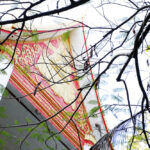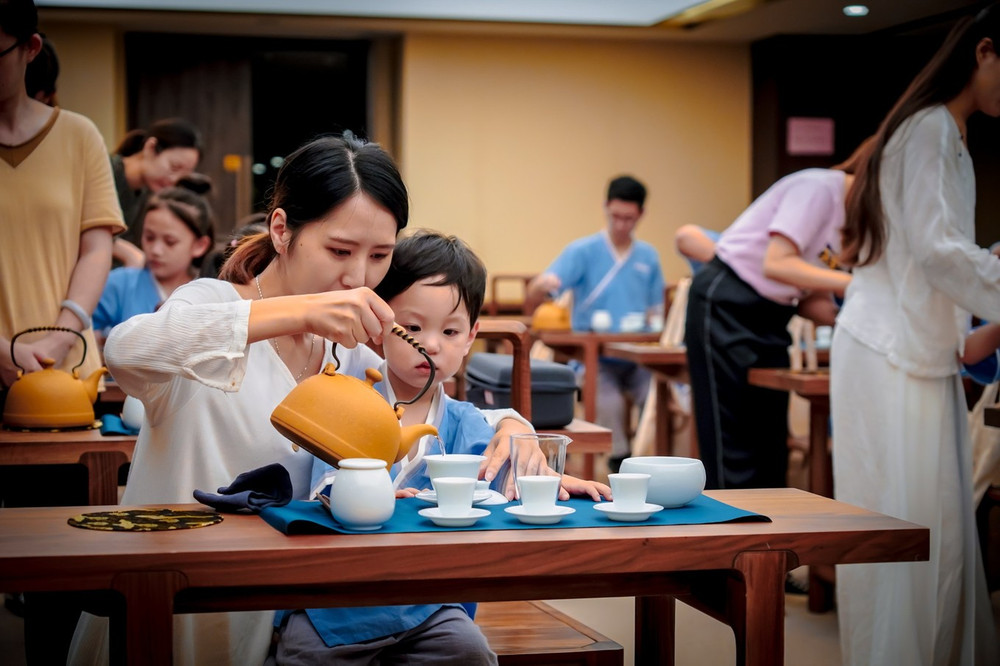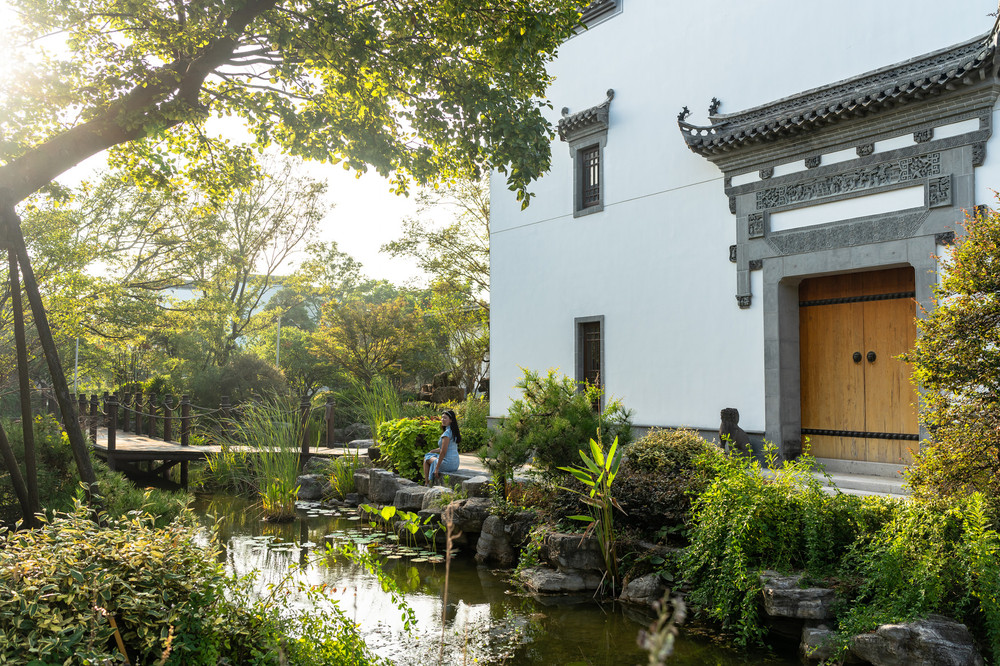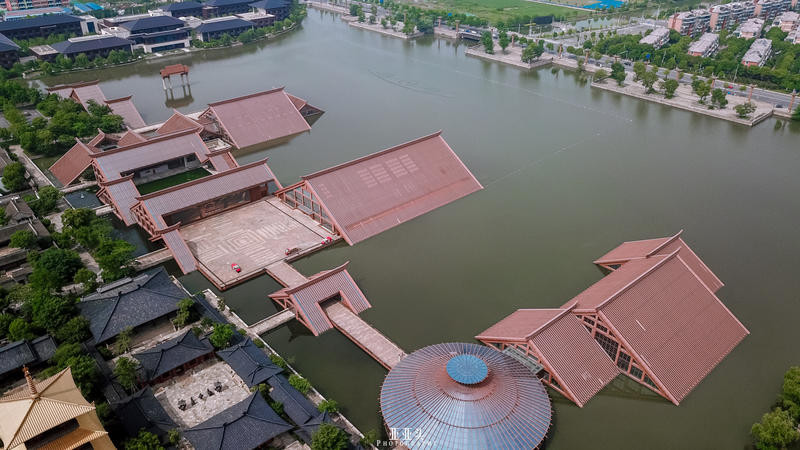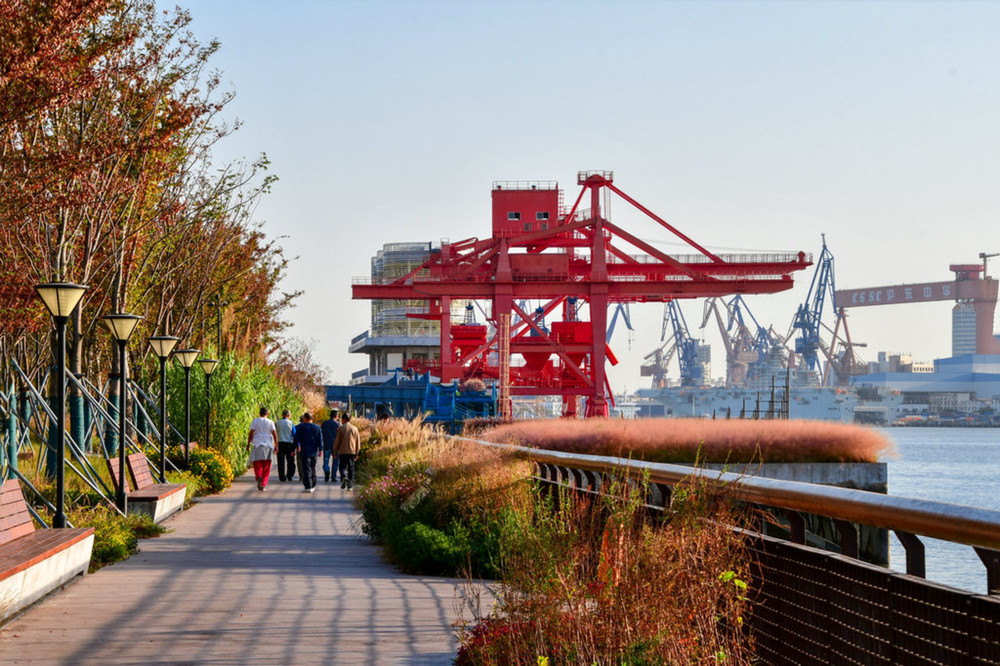Duration: 2 days, Time: July, Cost per person: 6000 yuan, With whom: Spouse, Activities: Photography, Free travel.

The author embarked on a journey to visit some of the most iconic locations in Shanghai, capturing the essence of the city through the lens of photography. The itinerary included The Bund, Suzhou River, Waibaidu Bridge, Huangpu River, and the legendary Peace Hotel.
The Peace Hotel, known as the ‘First Building of the Far East’ with its distinctive green roof, was constructed in 1929 by a wealthy British Jewish businessman, Ellis Victor Sassoon. Initially named the ‘Cathay Hotel’, it brought a slice of Europe to Shanghai. Over 90 years later, it stands as the ‘Peace Hotel’ on the Bund, its value transcending that of a mere hotel. Entering the hotel is like stepping back in time to old Shanghai. Even if one does not stay, the hotel’s most representative building in China is open to visitors to savor the charm of the Bund.
The classic tour of the Peace Hotel includes the lobby, Jasmine Bar, Jazz Bar, Peace Museum, East Corridor and Bund East Gate, Cathay Room, Dragon and Phoenix Hall, Lalique Corridor, and Peace Hall. Shanghai writer Chen Danyan eloquently stated in her book ‘Becoming the Peace Hotel’: “No monument is more suitable to be the monument of Shanghai than the Peace Hotel. With an open, simple, and knowledgeable approach of a grand hotel, it connects and proves the vicissitudes of the old times, which is richer and more realistic than any single monument.” The stories of the Bund, the celebrities, and the elegance of the past century are all condensed within these walls.
During this visit, the author had the fortune to stay in this legendary hotel and immerse in the old Shanghai sentiment. The lobby features an octagonal dome and a miniature of Shanghai silver engraving. The dome, once closed for a long time, was revealed again during a major renovation in 2007. The colorful glass on the ceiling is a sight to behold, with golden and powder green colored glass inlaid on the octagonal court, allowing light to flow down from the sky, warm and bright. Above the dome, the symbol of the Victor family, ‘Hounds’, is visible, reflecting his passion for horse racing and hunting, initially naming the bar ‘Horse and Hounds’. The central ‘Dove of Peace’, donated by an artist on the 90th anniversary of the Peace Hotel, is made of 1580 pieces of colored glass, depicting the dove spreading its wings in a graceful posture, avant-garde yet dignified, calm yet romantic.
Surrounding the dove are four silver etchings that capture the essence of 1920s and 1930s Shanghai, evoking a sense of nostalgia. The eastern entrance of the Peace Hotel, usually closed due to feng shui beliefs that it would disperse wealth towards the Huangpu River, is a vintage staircase popular among tourists for photos and the location of Charlie Chaplin’s wedding ceremony area. The elevator to the restaurant starts from here, and the corridor leading to the eastern entrance hosts a photo exhibition showcasing classic scenes filmed here, such as ‘City Without Sleep’, ‘Tiny Times 3’, ‘The Listener’, ‘Mei Lanfang’, and ‘Intouchables’, among others.
**Peace Museum, the First Museum in a Hotel Format in China**
This iconic hotel in Shanghai is also home to a museum, likely the first in China established in a hotel format. Tucked away up a nondescript staircase on the first floor, guests can visit the museum for free. Though not large, the museum condenses 91 years of history of the Peace Hotel. It displays a collection of ‘antique’ items such as a copper ice bucket engraved with ‘Cathay Hotel’, copper key cards, copper thermos bottles, copper ashtrays, and silver spoons, as well as calligraphy and paintings by renowned artists such as Wu Changshu, Fu Baoshi, and Liu Haisu. The vintage utensils, filled with the marks of history, record the glory left by the original owner Sassoon and his celebrity and political friends. Old photos bring scenes from history to life, with anecdotes of celebrities at ‘Old Peace’ adding interesting topics when looking back on the years. Playwright George Bernard Shaw visited, American General Wedemeyer came, General Marshall stayed, and even Principal John Leighton Stuart and the famous Indian poet Rabindranath Tagore also stopped by; American comedy master Charlie Chaplin and the leading lady of ‘Modern Times’, Paulette Goddard, stayed in room 51; after the founding of New China, the Peace Hotel also received leaders such as Queen Elizabeth II of the United Kingdom and former U.S. President Richard Nixon.S. President Bill Clinton. This small museum can be said to display the historical records and humanistic legends from the Cathay Hotel to the Peace Hotel.
The rich historical heritage and cultural accumulation make the Peace Hotel a ‘building prop’ for 33 movies and TV dramas. The Peace Hotel Museum is now open to guests for visits, and tourists can also pay to visit and experience the most iconic building in Shanghai, stepping into the glorious years of the Bund. In this peaceful space, it tells the historical and humanistic stories of the Cathay Hotel (1929 to 1952) and the Peace Hotel (1956 to 2007), as well as the new look of the hotel after careful renovation and reopening on July 28, 2010, allowing people to understand the nearly hundred years of ups and downs of this building. Strolling in the museum, enjoying the feeling of time passing, looking at the writing desk from the Sassoon period, and flipping through old Shanghai books, the taste is really good.
**Nine Country Suites, Living in the Luxury of the 1930s**
Staying a night at the Peace Hotel is the first choice for many tourists coming to Shanghai. Only here can you feel the most authentic taste of Shanghai and those old Shanghai sentiments. The entire hotel has 270 unique luxurious rooms and suites, equipped with Art Deco-style furniture and modern living facilities. What’s more worthy of mention are the nine national suites on the fifth, sixth and seventh floors. These suites are the imagination and concept of Sassoon. He wanted to incorporate the styles of different countries into Cathay Hotel. Now, the Indian, British, Chinese and American suites directly follow the original style of Peace Hotel. While the French, Italian, Spanish, Japanese and German suites have been redesigned on the basis of maintaining the original concepts of different countries and historical styles. Each suite has an area of about 178 square meters. During this trip to Shanghai, I was fortunate to stay in the French suite. Let’s take a look at what it’s like through my lens? The French suite is located on the 6th floor. Guests staying in the suite can directly go to the Golden Club executive floor on the 9th floor to check in and enjoy free access to the Golden Club Lounge for European breakfast and afternoon tea snacks. Opening the door, a suite with an area of about 178 square meters appears in front of us. First, there is a corridor, and at the end of the corridor is a beverage bar. The overall layout of the French suite advocates an elegant and fashionable style. It is papered with classical wallpaper in Art Nouveau style. In addition, there are walnut-carved furniture and luxurious design fabrics. The living room is the shooting location of the first episode of the TV drama ‘Negotiator’. Yang Mi was sitting on the sofa here at that time. The design of the fireplace also highlights European style and has a strong retro charm. The dining room offers a view of the Bund. Opposite is the Oriental Pearl Tower. Especially when the lights are on at night, it is extremely beautiful. An old-fashioned clock placed in a corner of the dining room brings people into the distant memory of Shanghai in the 1930s. Taking pictures in a cheongsam is extraordinarily elegant. In the middle of the bedroom is a comfortable large bed. The mattress is soft, but there is no sinking feeling when lying down. Even people like me who usually have a bad lumbar disc feel very comfortable. The charming marble bathroom has a large bathtub. All toiletries are the ROSE 31 series of Le Labo. The unique fragrance directly leads people into a prosperous olfactory space. Many dignitaries, celebrities and stars have stayed in these suites. Many shooting locations of movies and TV dramas are also here. The ‘nine national suites’ present the style of another era for tourists in this prosperous metropolis of Shanghai, a kind of noble charm full of charm and extraordinary taste. The elegance of the 1930s can be glimpsed from the solemn oak wall decorations and wooden window sills. Leaning on the windowsill, looking at the Huangpu River and listening to the whistles of passing ships and the clock tower of the Bund Customs House, I am filled with emotions.
[Cathay Room, the Most Beautiful Observation Deck on the Bund] The predecessor of Cathay Room was the ‘grill room’ of Peace Hotel. At that time, it meant the top Western restaurant, and the rich people from all over the world came to check in. Up to now, the open-air private room with the best view still needs to be reserved in advance for 6,000 yuan per night. The window seats need to be reserved more than a week in advance. This is an excellent shooting location for seeing the Bund in Shanghai. The meals presented in the form of set menus
—
**Main Course: Lamb Chops**
The main course features lamb chops, with the degree of doneness selectable. Medium well is the chosen option. Two large Australian lamb racks are beautifully paired with green vegetable puree and rosemary sauce, enhancing the flavor of the lamb chops.
**Side Dishes: Thousand-layer Potato and Vinegar-pickled Red Onion**
The yellow dish is the Thousand-layer Potato, which is surprisingly hard to identify as a potato due to its layered texture and slightly crispy feel. The red dish is Vinegar-pickled Red Onion, offering a delightful sweet and sour taste.
**Dessert: Pavlova Cake**
For dessert, there’s a small rectangular Pavlova Cake that is not overly sweet and offers a refreshing taste. It is served with a scoop of chocolate ice cream, making it a favorite during summer. The dessert stand is part of an afternoon tea set, where desserts are well-matched and tea and beverages can be chosen freely.
**Rooftop Open-Air Cocktail Lounge**
The open-air cocktail lounge on the roof is a significant part of the Bund skyline. From here, one can enjoy a panoramic view of both sides of the Huangpu River and appreciate the most beautiful urban landscape of Shanghai. As night falls and the lights come on, the Bund’s lights create a stunning display, making it an ideal spot for portraits with a strong sense of time travel.
**Longfeng Hall: Classic and Luxurious Chinese Restaurant**
Located on the 8th floor, Longfeng Hall is adorned with traditional Chinese red pillars and green walls, Khitan gold patterns, and the famous dragon and phoenix roof, creating a classic and luxurious atmosphere. This renowned high-end Chinese restaurant serves classic Shanghai and Cantonese cuisine with exquisite ingredients and thoughtful service, evoking a sense of returning to the past.
**Dishes at Longfeng Hall**
– **Old Shanghai Smoked Fish**: A classic cold dish in Shanghai cuisine, it is relatively acceptable to southerners with a balanced sweetness and perfect crispness.
– **Wine-flavored Clam Bowl**: A unique local dish known only to old Shanghai foodies, this series of marinated dishes can include various ingredients. Here, duck tongues, shrimps, broad beans, and arctic scallops are added, creating a delicious combination of meat and vegetables.
– **Double-flavor Steamed Buns**: Served with a misty appearance, these buns are filled with shrimp and pork. They are to be enjoyed by first opening a window to drink the soup inside, and then eating the filling.
– **Charcoal-grilled Cod**: A personal favorite, this dish features tender cod fish with a unique sauce.
**Lalique Corridor**
Adjacent to Longfeng Hall is the Lalique Corridor, a space dedicated to Lalique art glass. This special glass art was popular worldwide last century, especially in Europe. The most famous product is Opalescent glass, created by melting antimony, arsenic, and cobalt during the firing process. These works exhibit special color effects and come in transparent and frosted varieties, appearing milky white from afar, dark blue up close, and bright red when viewed in the light. The Peace Hotel’s Lalique art glass ornaments include flower and bird screens, flying pigeons, and fish in shallow waters, making it feel like a crystal world.
**Old Jazz Band at Peace Hotel**
When night falls, the Peace Hotel on the Bund’s C-position comes alive with familiar melodies from the 1920s and 1930s. The shock of seeing the elderly jazz band performing in their spirited blue suits is indescribable. Established in 1980, this is one of Shanghai’s most renowned jazz bands and China’s only elderly jazz band, with an average age of 80. They have been performing classic jazz in the hotel’s jazz bar every night for 40 years without interruption.
—You can’t see any decadence of these octogenarians. Their love for music and enjoyment of life are demonstrated on them. Such a state really makes us young people who easily complain of being tired feel ashamed.
Why can the jazz bar of Peace Hotel be rated as one of the world’s best bars by Newsweek in 1996? In the past four decades, why can it always be written into travel guides as a must-visit attraction and become a Shanghai scenery in the hearts of political leaders from various countries as well as ordinary people? This group of old musicians, known as ‘the evergreen tree in the art world’, are particularly good at playing famous jazz pieces from the 1930s and 1940s and famous pieces from all over the world. Their ‘legend of immortality’ has also become a beautiful scenery of Peace Hotel in Shanghai.
Today, the north building of Peace Hotel was historically known as Cathay Hotel and Sassoon House. It has the reputation of ‘the first building in the Far East’. It is the first high-rise building built by Jewish businessman Victor Sassoon in Shanghai and also the first modernist building in the history of modern architecture in Shanghai. It can be said to be the most worth visiting building on the Bund. Now, even if you are not a hotel guest, you can pay to visit and tour to catch a glimpse of the charm of old Shanghai.
In 1980, jazz, which had been interrupted for nearly 40 years, echoed in Shanghai again. Foreign guests felt that this is not only a band that can play foreign music pieces but also conveys the signal of China’s reform and opening up. Soon, the elderly jazz band became the signature of Peace Hotel.
In front of us, the musicians are old, the instruments are old, and the music scores are yellowed. But such a ‘three-old’ combination has a particularly touching charm. As the music starts, many people can’t help but dance. A piece of foxtrot or rumba makes this small jazz bar even more charming, as if returning to the dance party held in an old western-style house in the 1930s. While listening to the music, you can also sit close to the bar and watch the handsome bartender making drinks. The minimum consumption per person entering the jazz bar is a glass of drink. The per capita cost is about 100 yuan. In fact, it is still very cost-effective. Sipping a romantic cocktail in the jazz style of old Shanghai is also a unique experience. Compared with the young and fresh faces, these ‘old cured meats’ are even more memorable.
Knowing that we are from Xiamen, the current leader came to chat with us. His lively conversation and demeanor made us feel their sentiment. They like new things and are also happy to share their joy. ‘People all say that seeing us is like seeing the prosperity of old Shanghai. In fact, no. What we witness is a brand new Shanghai.’
If you come to Shanghai and if you pass by the Bund at night, even if you don’t stay at Peace Hotel, it is strongly recommended that you come to the jazz bar and listen to a live performance of the elderly jazz band. Accompanied by classic jazz and sipping a Sassoon cocktail makes people seem to return to the ‘golden age’ of the last century. Candlelight flickers, and notes float, bringing the old Shanghai dream to life with vivid perfection.
In Conclusion: If there is one building that epitomizes Shanghai, the Peace Hotel must be mentioned. Its existence goes far beyond being just a hotel; it encapsulates nearly a century of Shanghai’s historical charm. Every brick and tile, down to each piece of cutlery and musical instrument, possesses a unique flavor. It is not an exaggeration to say that it is a monument to Shanghai. A revolving wooden door separates the Peace Hotel from the bustling Nanjing Road Pedestrian Street outside, and this barrier seems to transport you back to old Shanghai in an instant. From the present to the past, only those who truly understand her can appreciate the legends beyond the door and the stories within those legends. Shanghai Journey | Stay at the Peace Hotel, Step into the Stories of Old Shanghai, and Witness the Glamour and History of the Bund!





